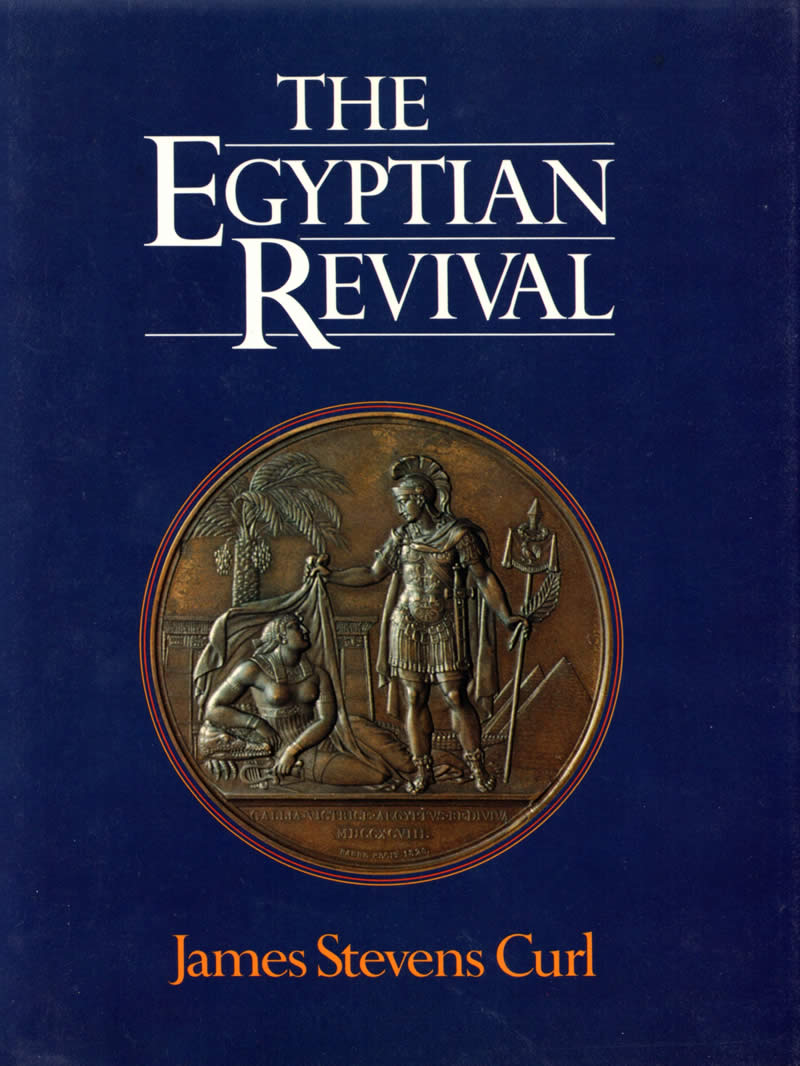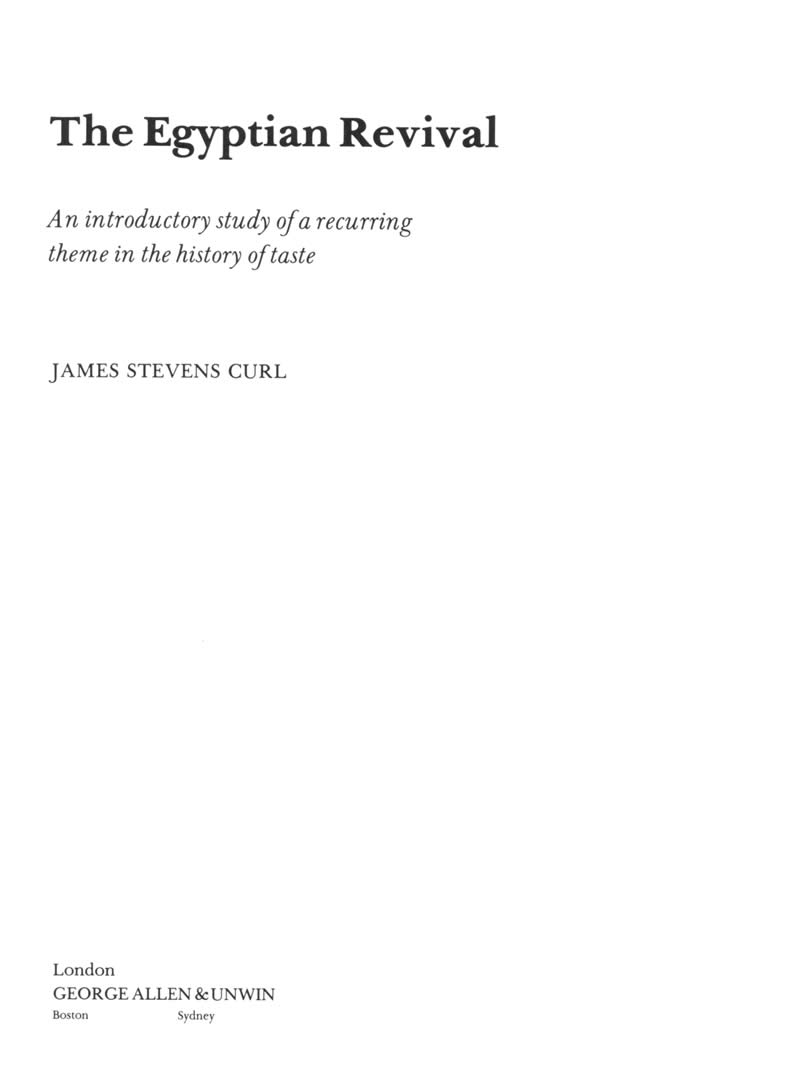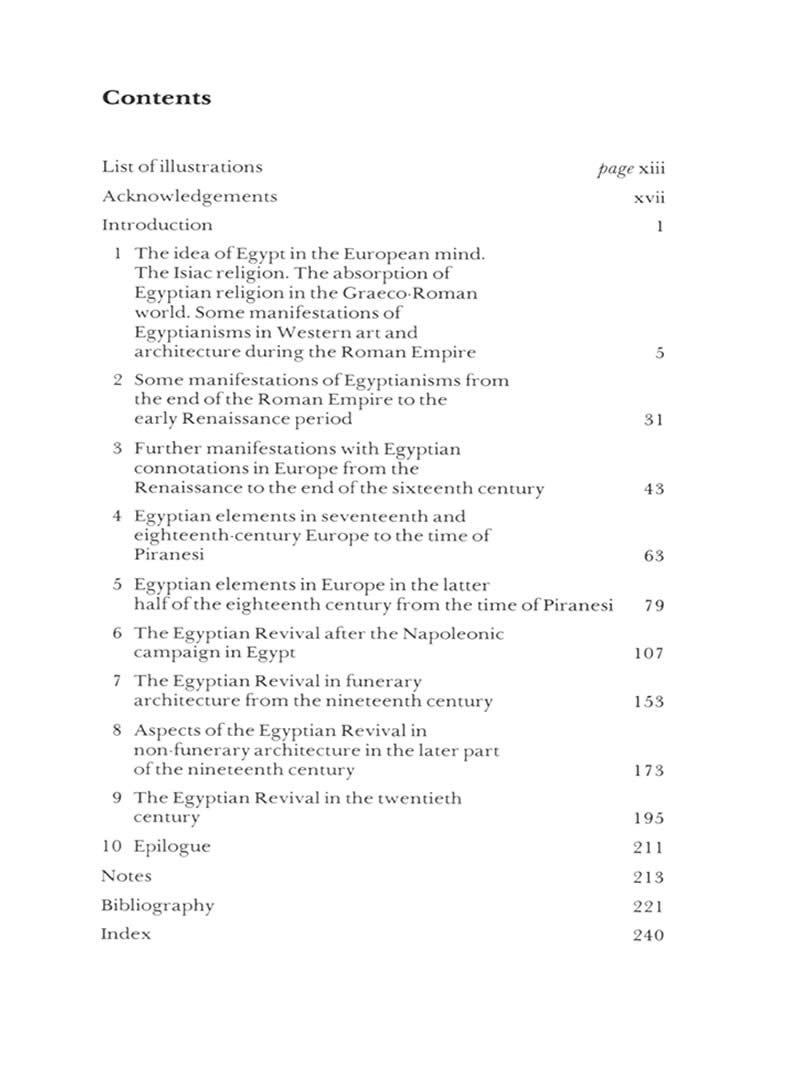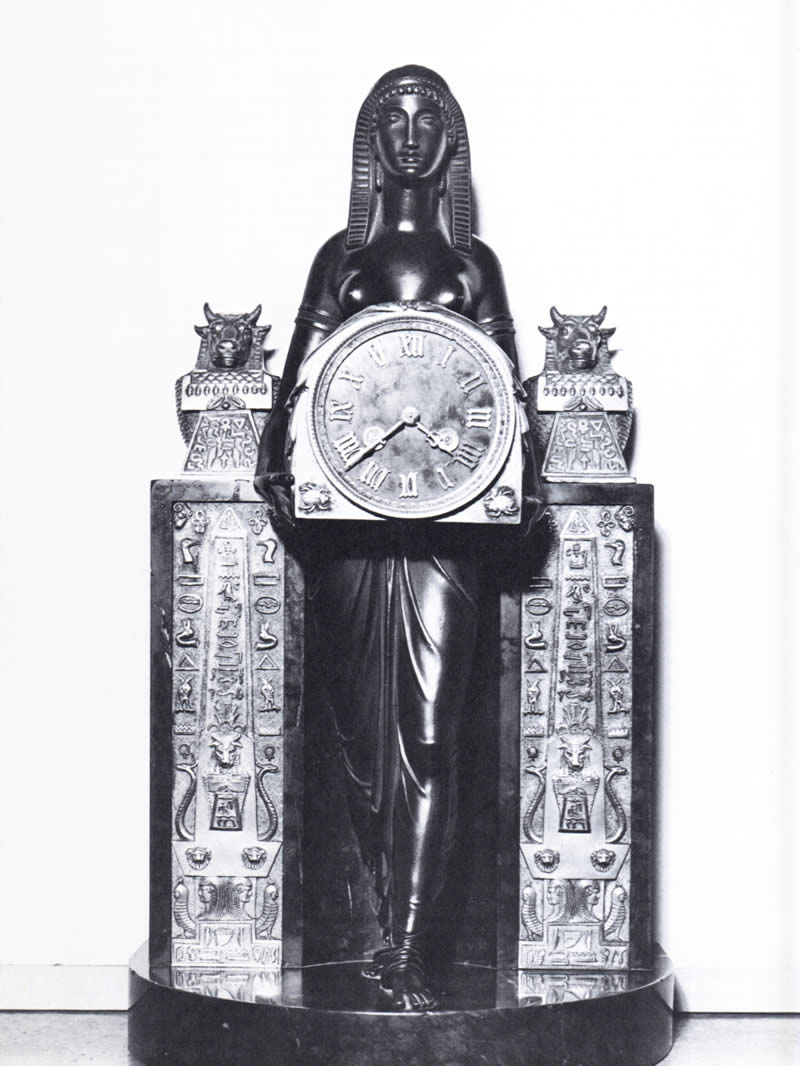The Egyptian Revival: an Introductory Study of a recurring Theme in the History of Taste

Author : James Stevens Curl
Publisher : Hemel Hempstead, Winchester, MA, & Sydney, NSW: George Allen & Unwin [Publishers] Ltd., 1982
ISBN: 0-04-724001-6 (hbk)
Histories of the Gothic, Greek, and other Revivals have already been written, but here, for the first time, is a comprehensive account of the Egyptian Revival, perhaps the least familiar but most distinctive of stylistic influences on Western art and architecture, yet it went far beyond style into the realms of religion, symbolism, and much else.
In this much-praised work, Curl looks at the profound impact of Ancient Egypt on the West, beginning with a consideration of the civilisation of the Nile Valley, continuing with the processes by which Egyptian deities and their associated imagery and attributes permeated the Roman Empire, and so became inextricably merged with Christianity itself, with Classical design, and with the vocabulary of motifs available in architecture, re-emerging at various periods, notably during the Renaissance, the 18th-century search for stereometrical purity, the Napoléonic rediscovery of Egypt, 19th-century investigations after hieroglyphs could be deciphered, and 20th-century renewed enthusiasm for things Egyptian, prompted by the finding of Tutankhamun’s tomb in 1922.
Reviews
'... the learned author... gives us ... an original work hallmarked with that perspicuity and lucidity that distinguished his previous works ... With the help of a comprehensive iconography, Curl argues convincingly ... that Egyptian art has been seminal for centuries and that its influence has been almost always beneficial. His book bids fair to become the standard work on this absorbing subject.'
'Curl’s main thesis [is] the influence of Egypt on architectural ... styles, upon which topic he is undoubtedly expert ... A book concerned with a motif and its occurrence over several centuries needs to be well illustrated, and here the publishers have done Curl proud. The quality of the 203 illustrations overall is very good and their interest of content exceptionally high... The text is packed with information ... Certainly there can be little that has been overlooked in this in-depth survey. It is most adequately backed by extensive footnotes and a detailed bibliography. The compact design has ensured that what could have easily become a large and unwieldy tome sits easily in the reader’s hand without any loss of clarity or presentation. This is a valuable addition to ‘para-Egyptological’ literature; the Egyptian theme spread far beyond the Nile valley and its influence can be seen in many aspects of life about us today - the Egyptian theme is a recurring one that predates all the others we know so well. It is good to see such a comprehensive survey of it [is] now available.'
'Curl is eminently qualified to survey this broad sweep... his long interest over some twenty years in the Egyptian Revival has brought a vast amount of material together. As is to be expected, there is an emphasis on architecture and especially funeral monuments ... (Curl’s previous book A Celebration of Death... exhibits his specific interest and rapport in this field). Curl, in his exceedingly detailed survey that belies its sub-title ... gives us plenty to think about in a very dense text replete with footnotes and extensive bibliography. The illustrations are well presented and reproduced and intriguingly stimulating... it cannot be said that Curl’s treatment is anything but thorough. Others have taken aspects of the Egyptian Revival in its various phases; here it can all be seen in a rather splendid assemblage.'
'The Egyptian Revival ... (is)... a wide-ranging survey. There is much intriguing material here... Curl shifts the emphasis of his study backwards, to the movement’s prolegomena... His final chapter, ‘The Egyptian Revival in the Twentieth Century’, hints at an evolution... from eclecticism of taste to eclecticism of style. In the astounding Egyptian bedroom designed for Lord Battersea... (c.1903), archaeology and Invention are brilliantly balanced. And in the Hoover Factory of 1931-32 eclecticism finally triumphs over undiluted historicism.'
'As Curl is at pains to emphasise, the fruits of Bonaparte’s expedition did not fall upon a world unprepared... The Egyptian Revival ... traces the influence of Egypt on European art and culture both forward to modernistic cinemas and back to the Roman Empire... Curl ... painstakingly, indeed remorselessly, lists, and ... provides many extraordinary and recondite uses of what he calls “Egyptianising” forms. This (is a) comprehensive pioneering study.'
'The Egyptian Revival... has an impressively broad scope covering not only architecture but all the decorative arts from the ancient world to the present day. It is thus important as the first comprehensive study of its kind, and it is hard to imagine it being superseded in the near future... The story... in the twentieth century... [is]... a strikingly satisfying terminus to a fascinating and important book.'
'The Egyptian Revival ... is full of attractive matter and is finely illustrated... Curl’s pertinency has been immense. He succeeds in showing that ancient Egypt has been subject to pretty well uninterrupted aesthetic borrowing ever since Julius Caesar and Mark Antony dallied with a Greek queen at Alexandria.'
'The definitive masterwork on the Egyptian Revival ... Prodigious research over many years underpins no dry-as-dust monograph but a vivid and smooth narration, as absorbing and readable as a first-rate biography. This lively text is augmented by remarkable illustrative material of an unusual historical, geographical and aesthetic range ... This is, in every department, a definitive work: generations of students will be indebted to Curl’s rare dedication, passion, and precision.'
'The Egyptian Revival ... is a phrase... not yet as familiar as ‘Gothic Revival’ or ‘Greek Revival’ - but it may now be regarded as well and truly coined. Curl has made an impressive compilation of European borrowings from Egypt, ranging from obelisks in imperial Rome to the Carlton Cinema in Islington. (The book) covers ... much ground... Curl has opened up an extensive and fertile territory in which explorers of themes and motifs will be occupied for many years.'
'As Curl has brilliantly demonstrated in The Egyptian Revival ... the idea of Egyptian culture has pervaded European civilisation in varying degrees since Roman times ... Curl’s marvellously informative book (is) handsomely illustrated...'
'The book is so densely packed with assertions and assumptions that one is numbed into unquestioning submission. Once in a while the author raises a point that gives pause for doubt, but invariably is found to be right... he (has) rehearsed the material, distilled and reduced it... Like all good works of reference, it gives sources to which one may immediately return to expand the material ... (It is) a work of reference ... which in the case of some artists provides the only material available in English. The Egyptian Revival is likely to stand alone for a generation or so.'




 LinkedIn
LinkedIn  Wikipedia
Wikipedia